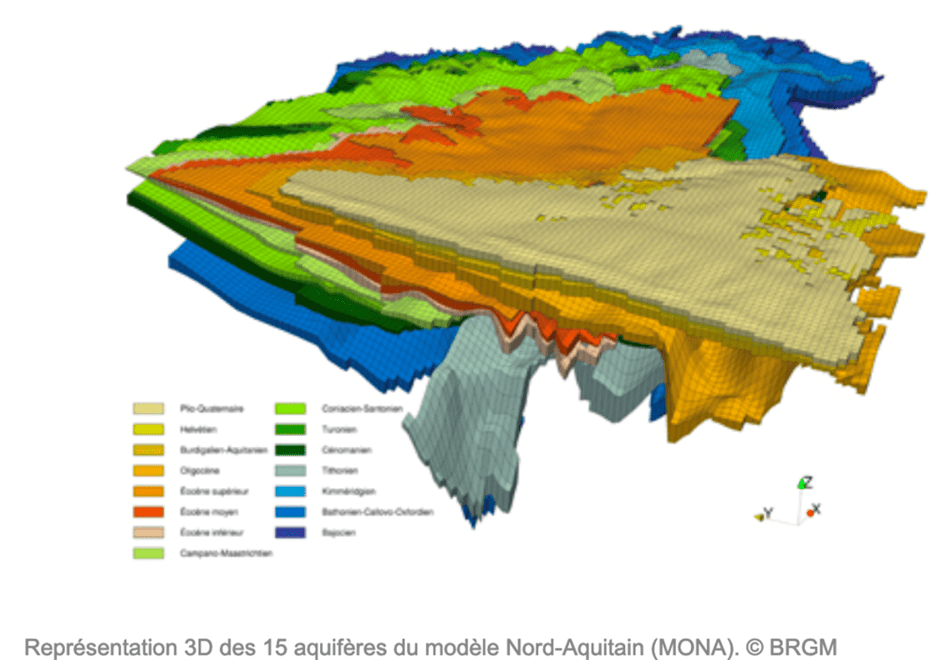Our Research Areas
The Critical Chemistry research group is dedicated to the ambitious task of characterizing the diversity of low temperature water-rock interactions critical in global element cycling, evolution of the Earth system, water quality and soil production, climate change, net-zero energy, and critical mineral resources. Fluid-rock interactions intersects many disciplines of the Earth Sciences from (bio)geochemistry to hydrology, geophysics and geomorphology – as such, we embrace an interdisciplinary spirit in our work, building across spatiotemporal dimensions from the mineral surface-fluid interface to regional scale river basins. Our approach leverages sophisticated geochemical toolsets (environmental isotopic and trace element tracers) and a 3-pronged synergistic approach involving laboratory experiments, numerical modeling, and field methods.
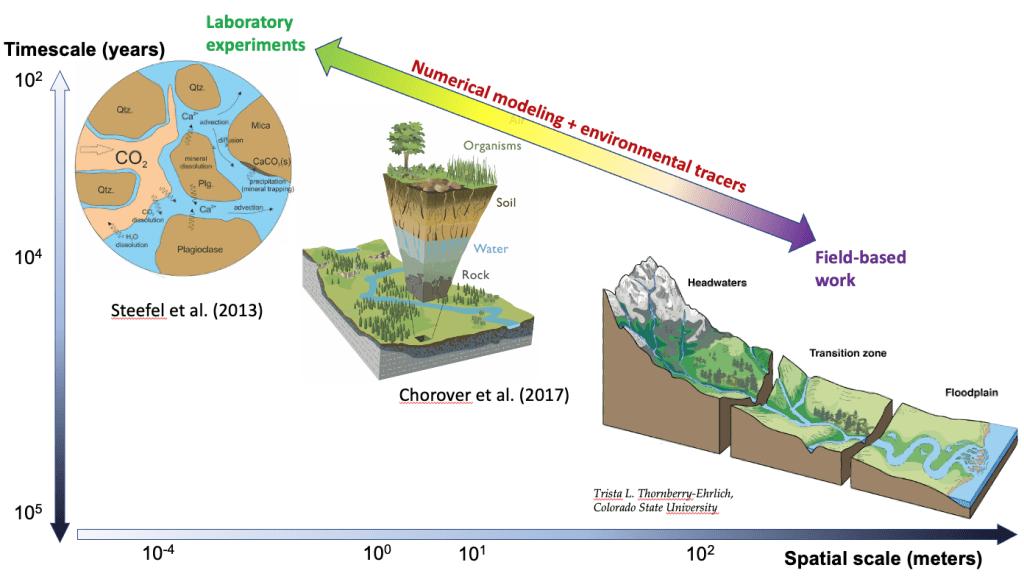
Kinetics & thermodynamics of low-T mineral-fluid reactions
Kinetics and thermodynamics of low temperature mineral-fluid reactions
Metal stable, radiogenic isotopes and trace element ratios offer precise metrics of various water–rock (and plant–water–rock) interactions driving biogeochemical cycles within the Critical Zone. Significant analytical advances have opened up a suite of environmental tracers from a large portion of the of the period table. However, up until rather recently, there have been only a handful of studies taking advantage of multi-tracer approaches to probe biogeochemical reactions and hydrological processes. Stable isotopes and trace element partitioning, in particular, are driven by kinetic and/or equilibrium effects and, thus, can provide quantitative insight into chemical reaction rates and their thermodynamic controls. Our goal is to develop a suite of multi-tracer approaches to constrain kinetic and thermodynamic properties for a large variety of water–mineral reactions commonly observed in nature.
List of planned and ongoing research directions in this theme:
- Mineral growth/dissolution, adsorption, and redox chemical processes– rates of reactions, (near)equilibrium processes, crystal growth mechanisms, mineral transformations
- Colloids, nanoparticles, precursor, and intermediate phases
- Environmental tracer development (i.e., isotopes, trace elements, nanoparticles)
- Experimental and numerical modeling approaches
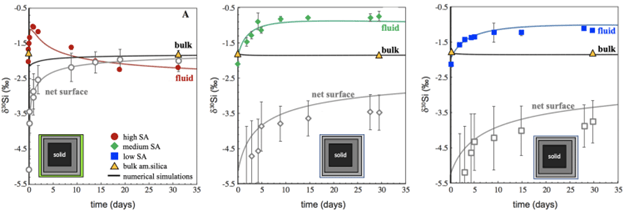
Evolution of silicon stable isotopes during amorphous silica growth experiments. Fernandez et al. (2019) GCA.
Critical Zone biogeochemical cycling and landscape evolution
Novel high frequency steamwater geochemical datasets are now becoming available and suggest that commonly observed steady-state (chemostasis) in headwater catchments over order or magnitude changes in discharge based on seasonal/monthly data breaks down at shorter timescales (i.e. daily, hourly). To understand what drives observed steady-state in streamwater chemistry, we have been investigating the extent to which short timescale extreme storm events offer a window into watershed transport and biogeochemical relationships. Stable isotopes can help unravel this conundrum through its known sensitivity to individual chemical reactions driving solute catchment dynamics.
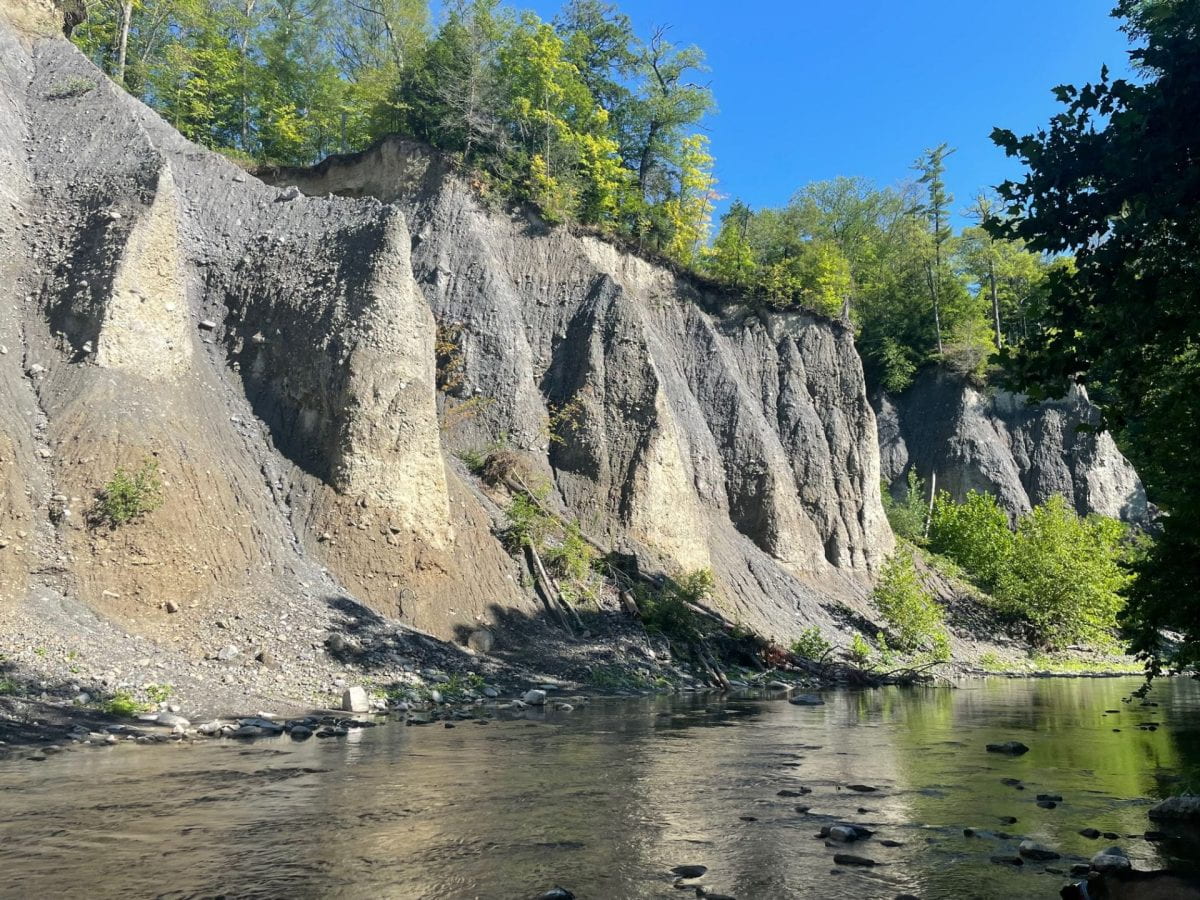
Varna Cliffs characterized by roughly 30m high glacial deposits part of the Fall Creek watershed in Central NY.
Planned research directions involve integrating a more holistic approach, bringing is comprehensive solid and fluid phase analyses to identify and constrain first order controls on modern and paleo weathering fluxes.
Cascadilla Creek sampling site during high flow. Video courtesy of Hunter Jamison →
List of planned and ongoing research directions in this theme:
- Characterizing the relationship between biogeochemical reactivity and water transport timescales and quantifying their impact on soil/regolith development and nutrients/solute export fluxes.
- Combined geochemical and geophysical approaches to characterizing reactivity and transport in the CZ
- Dust inputs in tropical system – frequency, intensity, and changing sources.
- Influence of plants: organic acids, plant uptake of nutrients/solutes and their recycling in the biosphere, dissolution/formation of bio-precipitated minerals
- Urban systems: urban stormwater, hidden streams
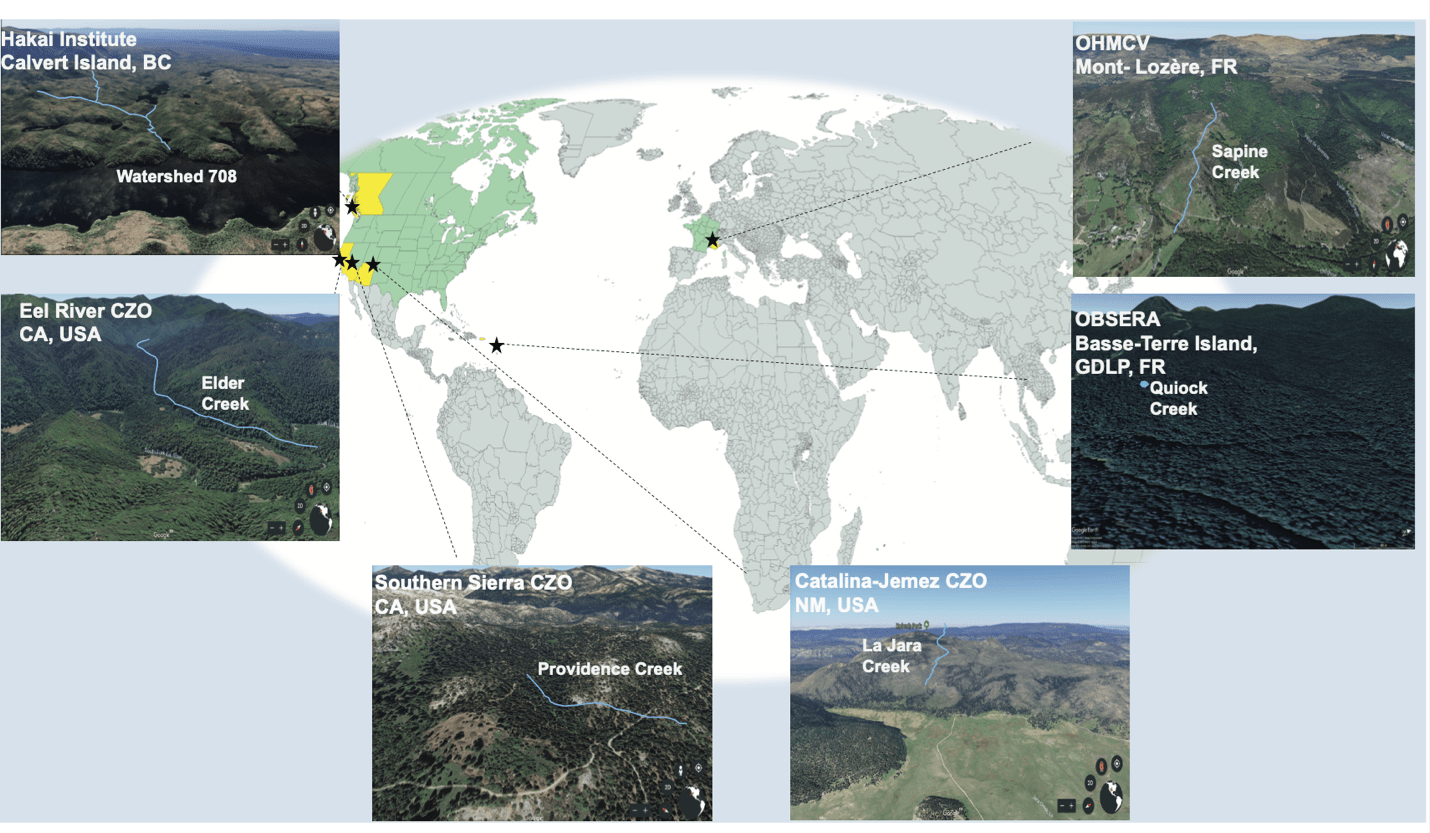
Map of low order catchments studied as part of a cross-site CZ analysis investigating silicon stable isotope signatures of storm events. Fernandez et al. (2022) JGR Biogeosciences
Regional scale hydrogeochemistry
Part of an ongoing collaboration with Bordeaux INP ENSEGID and BRGM, we aim to develop a physically-based, regional scale 3D groundwater + reactive transport model for the Aquitaine Basin (the 2nd largest river basin in France), strongly impacted by anthropogenic activities such as urban development and agriculture. Groundwater age tracers (C-14), hydrogen and oxygen stable isotopes, noble gase, temperature, and other environmental tracer concentration data will be used in combination with the numerical model to rewind back in time and generate a history of recharge events over the past ~40ka. Constraining spatiotemporal changes in recharge events in response to climate changes in the past help to better predict future groundwater availability and better inform water resource management plans. Next steps involve the incorporation of a broader suite of isotope systems.
Sedimentary basins, water resources, geothermal energy
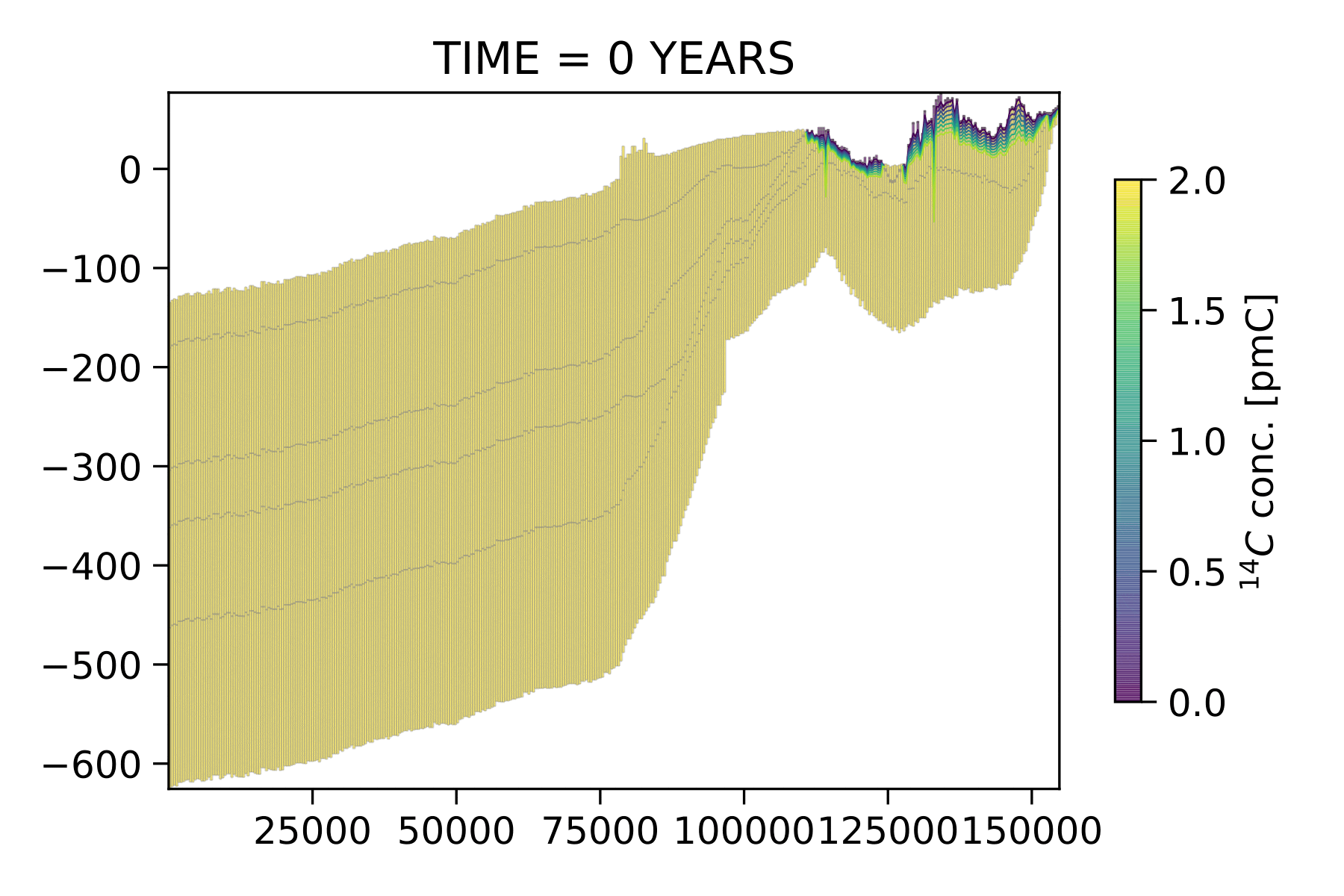
Example of a C-14 tracer simulation of a 2D cross section of the Aquitaine Basin ran out to steady state.
